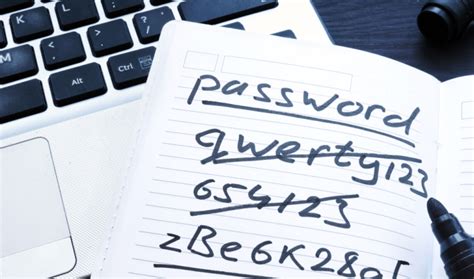
A massive data breach has potentially exposed the personal information of 184 million U.S. consumers, prompting urgent warnings from cybersecurity experts. The leaked data, discovered by researchers at Cybernews, includes names, addresses, dates of birth, phone numbers, and hashed passwords, raising serious concerns about identity theft and other malicious activities. Experts advise immediate action to secure online accounts.
The discovery of this extensive data leak is a stark reminder of the ever-present threat of cybercrime and the vulnerability of personal data stored online. Cybernews researchers uncovered the exposed information, which they believe was aggregated from multiple previous breaches and data scrapings. The sheer volume of compromised data makes this incident particularly alarming, potentially impacting a significant portion of the U.S. adult population. The exposed information can be used in a variety of malicious ways, including identity theft, phishing attacks, and account takeovers.
“This is a massive amount of data that could be used to cause significant harm,” said a Cybernews spokesperson. “Individuals should take immediate steps to protect themselves.”
The leaked database contains a wide range of personal information, going beyond just usernames and passwords. The inclusion of names, addresses, dates of birth, and phone numbers creates a comprehensive profile of each individual, making it easier for criminals to impersonate victims and carry out fraudulent activities. The hashed passwords, while not directly readable, can still be cracked using various techniques, especially if the passwords are weak or commonly used.
The implications of this breach are far-reaching. Individuals whose data has been exposed are at increased risk of identity theft, which can have devastating consequences, including financial losses, damaged credit scores, and legal troubles. Phishing attacks, where criminals attempt to trick victims into revealing sensitive information, are also more likely to succeed when attackers have access to personal details such as names and addresses. Account takeovers, where criminals gain unauthorized access to online accounts, can result in financial losses, data breaches, and reputational damage.
Security experts are urging individuals to take proactive steps to protect themselves. These steps include changing passwords on all online accounts, especially those that use the same password, enabling two-factor authentication whenever possible, and being vigilant about phishing emails and other scams. It is also recommended to monitor credit reports for any signs of fraudulent activity and to consider using a password manager to generate and store strong, unique passwords.
The scale of this data breach highlights the importance of data security and privacy. Companies that collect and store personal information have a responsibility to protect that data from unauthorized access. This includes implementing robust security measures, such as encryption, access controls, and regular security audits. It also includes complying with data privacy regulations, such as the California Consumer Privacy Act (CCPA) and the General Data Protection Regulation (GDPR), which give consumers more control over their personal data.
The incident also underscores the need for individuals to be more aware of their digital footprint and to take steps to protect their privacy online. This includes being careful about what information they share online, using strong passwords, and being wary of suspicious emails and websites. It also includes regularly reviewing privacy settings on social media accounts and other online services.
The compromised data is believed to be a compilation of information gathered from various sources over time. This means that individuals who have been affected by previous data breaches may also be at risk in this latest incident. It is therefore important for everyone to take proactive steps to protect themselves, regardless of whether they believe they have been affected by a previous breach.
The discovery of this massive data breach comes at a time when cybercrime is on the rise. The COVID-19 pandemic has led to a surge in online activity, creating more opportunities for criminals to exploit vulnerabilities. The increasing sophistication of cyberattacks also makes it more difficult for individuals and organizations to protect themselves.
In light of these challenges, it is essential to adopt a layered approach to security. This means implementing multiple security measures, such as firewalls, intrusion detection systems, and antivirus software, to protect against different types of threats. It also means training employees to recognize and avoid phishing attacks and other scams.
The exposed data can potentially be used for a variety of malicious purposes, including:
- Identity theft: Criminals can use the stolen information to open fraudulent accounts, apply for loans, and commit other types of identity theft.
- Phishing attacks: Criminals can use the stolen information to craft more convincing phishing emails and scams, tricking victims into revealing sensitive information.
- Account takeovers: Criminals can use the stolen information to gain unauthorized access to online accounts, such as email, social media, and banking accounts.
- Spam and malware distribution: Criminals can use the stolen information to send spam emails and distribute malware.
- Doxing: Criminals can use the stolen information to dox victims, which involves publicly revealing their personal information online.
The long-term consequences of this data breach could be significant. Individuals whose data has been exposed may face years of dealing with the fallout from identity theft and other types of fraud. The reputational damage to companies that have been affected by the breach could also be substantial.
The incident serves as a wake-up call for individuals and organizations to take data security more seriously. It is essential to adopt a proactive approach to security and to stay informed about the latest threats and vulnerabilities. By taking these steps, individuals and organizations can reduce their risk of becoming victims of cybercrime.
The Cybernews report highlights the following key findings:
- Scope of the breach: The data breach affects 184 million U.S. consumers.
- Types of data exposed: The exposed data includes names, addresses, dates of birth, phone numbers, and hashed passwords.
- Potential impact: The exposed data can be used for identity theft, phishing attacks, account takeovers, and other malicious activities.
- Recommendations: Individuals should change their passwords, enable two-factor authentication, and monitor their credit reports.
- Importance of data security: Companies should implement robust security measures to protect personal data.
The incident is a reminder that data breaches are a common occurrence and that everyone is at risk. It is therefore essential to take proactive steps to protect your personal information online.
The Yahoo! News article also emphasized the importance of vigilance and continuous monitoring. “It’s not a one-time fix,” a cybersecurity expert told Yahoo! News. “You need to be constantly monitoring your accounts and being aware of any suspicious activity.” This ongoing vigilance is crucial for mitigating the long-term risks associated with data breaches.
The legal ramifications of such a massive data breach are also significant. Companies that fail to adequately protect personal data may face lawsuits and regulatory fines. The CCPA and GDPR, for example, impose strict requirements on companies that collect and process personal data, and these laws provide consumers with the right to sue companies that violate their privacy rights.
The incident underscores the need for stronger data privacy laws and regulations. Lawmakers should consider enacting stricter laws that hold companies accountable for protecting personal data and that give consumers more control over their information.
In addition to changing passwords and enabling two-factor authentication, individuals should also consider taking the following steps to protect themselves:
- Use a password manager: A password manager can help you generate and store strong, unique passwords for all of your online accounts.
- Be careful about what you share online: Avoid sharing sensitive information online, such as your Social Security number or bank account information.
- Be wary of suspicious emails and websites: Do not click on links in suspicious emails or visit websites that look untrustworthy.
- Monitor your credit report regularly: Check your credit report regularly for any signs of fraudulent activity.
- Consider using a credit monitoring service: A credit monitoring service can help you detect and prevent identity theft.
- Freeze your credit: Freezing your credit can prevent criminals from opening new accounts in your name.
- Be aware of phishing scams: Phishing scams are designed to trick you into revealing sensitive information. Be wary of emails, phone calls, and text messages that ask for personal information.
- Keep your software up to date: Keeping your software up to date can help protect you from security vulnerabilities.
- Use a VPN: A VPN can help protect your privacy online by encrypting your internet traffic.
- Educate yourself about cybersecurity: The more you know about cybersecurity, the better you can protect yourself from cyber threats.
The impact of this data breach extends beyond individuals. Organizations are also at risk. Criminals can use the stolen information to target businesses with phishing attacks, ransomware attacks, and other types of cyberattacks. It is therefore essential for organizations to implement robust security measures to protect themselves from these threats.
The Cybernews investigation also revealed that the data was being sold on various dark web forums, making it readily available to criminals around the world. This further increases the risk to individuals whose data has been exposed.
The incident highlights the importance of collaboration between government, industry, and individuals to combat cybercrime. Government agencies can play a role in investigating and prosecuting cybercriminals. Industry can play a role in developing and implementing security technologies. Individuals can play a role in protecting themselves by taking proactive steps to secure their online accounts.
“We all have a role to play in protecting ourselves from cybercrime,” said a cybersecurity expert. “By working together, we can make the internet a safer place for everyone.”
The discovery of this massive data breach serves as a stark reminder of the importance of cybersecurity and data privacy. Individuals and organizations must take proactive steps to protect themselves from cyber threats. By doing so, we can reduce the risk of becoming victims of cybercrime and protect our personal information from unauthorized access. The continuous and evolving nature of cyber threats necessitates ongoing vigilance and adaptation of security measures to stay ahead of potential attacks. Ignoring these risks can have severe and long-lasting repercussions. The proactive measures mentioned above are not just suggestions but essential practices for navigating the modern digital landscape. The implications of this breach will continue to unfold, but the lessons learned should prompt immediate and sustained action.
Frequently Asked Questions (FAQ)
-
What information was exposed in the data breach? The leaked data includes names, addresses, dates of birth, phone numbers, and hashed passwords of 184 million U.S. consumers.
-
How can I find out if my information was exposed? It’s difficult to definitively determine if your information was specifically included in this breach. However, if you’ve been affected by previous breaches or have reason to believe your data might be compromised, you should take preventative measures. Consider using a service that monitors data breaches, but be cautious about entering your information into potentially untrustworthy sites. The best course of action is to assume you are at risk and take steps to protect yourself.
-
What steps should I take to protect myself? You should immediately change passwords on all online accounts, especially those that use the same password. Enable two-factor authentication whenever possible. Be vigilant about phishing emails and other scams. Monitor your credit reports for any signs of fraudulent activity. Consider using a password manager to generate and store strong, unique passwords.
-
What is two-factor authentication, and how does it help? Two-factor authentication (2FA) adds an extra layer of security to your online accounts. In addition to your password, you’ll need to provide a second form of verification, such as a code sent to your phone or generated by an authenticator app. This makes it much harder for criminals to access your account, even if they have your password.
-
Who is responsible for this data breach? The exact source of the breach is still under investigation. Cybernews researchers discovered the exposed information, which they believe was aggregated from multiple previous breaches and data scrapings. The responsibility lies with the organizations that failed to adequately protect the data in the first place, leading to the initial breaches and subsequent aggregation. This highlights the importance of robust security measures and compliance with data privacy regulations.









